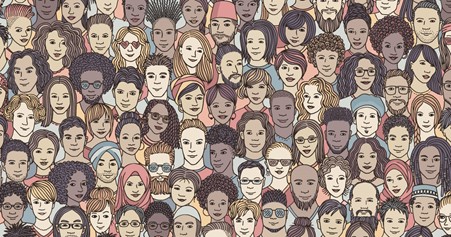“Today, there are 1,166 community colleges in the United States, and about half of US undergraduates attend community college”(Davidson, p.11).
This is an amazing figure that I’ve never expected. I think the fact that about half of US undergraduates attend community college reveals the significant status of the community colleges in the U.S. Through her book, The New Education, Davidson navigates how the community colleges became established in the US history, the aims of community colleges, the differences between a four-year research university and a community college, etc. From the beginning of the nineteenth century, a community college was intended as an alternative form of post-secondary education, not as a “lesser” institution in the four-year model. Called “junior colleges,” they increased in number from 1909 to 1919. The community colleges were designed specifically to meet the economic challenges of industrialization but with a focus on non-elite students. Some of the community colleges offered several forms of post-secondary training, for example, a teacher’s training.
Although these roles of the community colleges have been changed a bit (no longer a teacher’s training), their position in the community has not changed. A community college centers on the student with low tuition and fees, access to financial aid, academic flexibility and variety, basic literacy and numeracy training, specialized skills-training opportunities based on the specific, and up-to-date occupational requirements of a local community and so on.
Bearing a lot of positive fruits, the community college’s achievements are also numerous. Approximately 44 percent of students with family incomes of less than $25,000 per year go to community colleges directly after high school graduation. Average community college students earn significantly more income over their lifetime than do individuals from the same demographic groups who do not earn either a professional certificate or an associate’s degree. One large-scale study of community college students from six states shows that students completing an associate’s degree earn an average $5,400 a year more than students from the same background who do not complete the degree (Davidson, p.12).
I agree with the idea of the author that we must throw out many of the metrics higher education generally uses, including the bell curve, which dictates a predetermined grade distribution for success and failure. To maintain the identity of the community college, their students shouldn’t be evaluated by their scores or grades they received in their high schools. The community colleges should try to see their student’s potentials toward success, not the present failures they make. Also, the colleges should provide appropriate financial aids to students who want to study, but are not able to afford tuition.
As Manhattan Community College uses a pioneering method of language instruction called a “translingual learning model,” a method that sees multilingualism as a benefit, not a deficit, many colleges in the U.S. ought to invent ways to overcome cultural, racial and financial barriers in their communities.
I have been to LaGuardia Community College in Queens, which is introduced in the book as the epitome of the two-year colleges. Before I entered the GC, I visited the school to get some information about their free classes as a ‘temporary’ immigrant. I wanted to learn something and improve my English because at that time I just began to live in NYC. Unfortunately, my hopeful visit to the college soon turned to disappointment. Although the college’s president, Mellow, said that their students come from over 160 different countries and speak an astonishing 127 native languages, the school seemed not to be prepared to accept a stranger like me. It was difficult to find a place to get the information I wanted regarding the classes they offer, financial aids for immigrants, and so on. In addition, the ESL classes they offered were pretty expensive for immigrants who are looking for a way to take a quality English education. Is LaGuardia Community College really doing great jobs for many new immigrants in NYC? Honestly, I can not agree with that. Therefore, I believe there are still so many things to be done for community colleges to better serve their communities.






